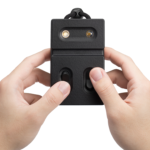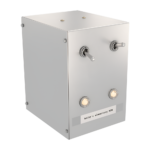
The Design Cybernetics Group at the SUSTech School of Design applies cybernetics to design and vice versa. Its members perform and investigate deliberate alternations between being in control and being out of control in the creative process. With a strong technological and computational yet qualitative focus, the group’s cross-disciplinary research extends across empirical design research, human-computer interaction, analog and analog/digital hybrid computing, dynamic systems modeling, computational geometry, computational optimization, toolmaking for design, and speculative product development. Relying heavily on Shenzhen’s digital design and manufacturing ecosystem, the group’s projects engage industry locally and internationally.
- The Contemporary Elementary Non-Trivial MachineIn a world increasingly dominated by technological systems that promise reliability, predictability, and control, there exists a family of actual… Read more: The Contemporary Elementary Non-Trivial Machine
- The Appropriation of Autopoiesis in ArchitectureThe term autopoiesis, a neologism made up of the two ancient Greek words autos (self) and poiesis (production/creation), was coined… Read more: The Appropriation of Autopoiesis in Architecture
- Join Our TeamThe Design Cybernetics Group is recruiting researchers with strong academic and technical skills for a range of positions: Masters Students… Read more: Join Our Team
- Time Benders: Design for AsynchronicityDay in, day out, most people work to meet somebody else’s schedules and deadlines, based on precise and objective synchronization… Read more: Time Benders: Design for Asynchronicity
- Design of an Analog-Digital Hybrid ControllerThis project is motivated by a need to raise awareness of and popularize analog and analog-digital hybrid computing. Analog computing… Read more: Design of an Analog-Digital Hybrid Controller
- Speculative Remake of the Ashby BoxWhile working at the Biological Computer Laboratory at the University of Illinois in the 1970s, the British cybernetician W. Ross… Read more: Speculative Remake of the Ashby Box





